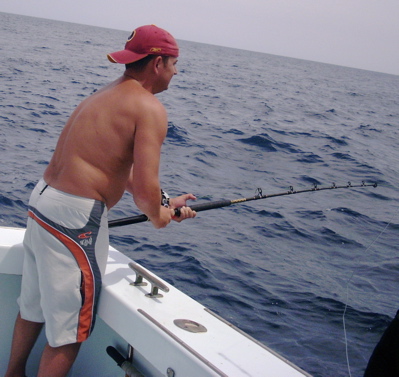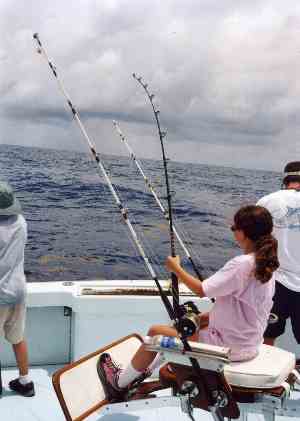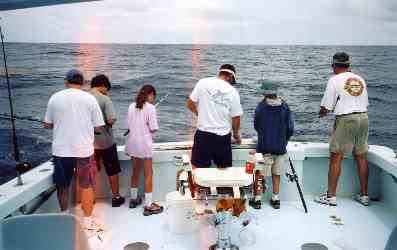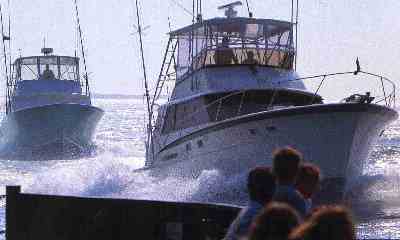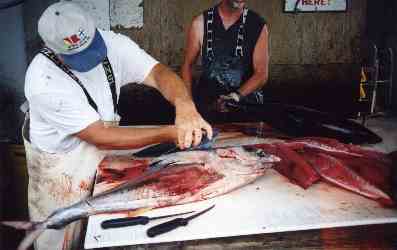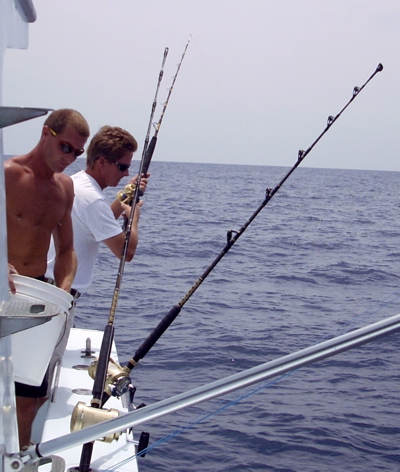 Tuna
Duck Captain Dan Rooks in white t shirt and First Mate Mike Edwards set
up for a day's fishing. Tuna
Duck Captain Dan Rooks in white t shirt and First Mate Mike Edwards set
up for a day's fishing. |
Even if you don't snag a Marlin or Sailfish, you'll
still be using the chair, because several other fish put up a pretty good
fight, too. And the fishing is only part of the experience. We have seen
flying fish, giant sea turtles, porpoises, sharks, manta rays, various large
seabirds, octopi and on a few occasions whales.
These boats carry a captain, a mate, and six customers.
The $300 per person fee is expensive,
but we budget for it ahead of time. It's a
great investment, especially figuring the fish you bring back. Obviously,
the boat supplies all fishing equipment and bait and gives everyone all
the help they want. You do need to bring a cooler with your lunches
and drinks. Also remember hat, camera, sunblock, raingear and sunglasses.
The hardest part of going offshore fishing is that you'll need to get
to the dock at about 5:30 am, and you'll return at about 4:30 pm. It will
be a long, exhausting day. But there are couches in the cabin and the hold where you
can take a break from the sun and even catch a nap. The boats keep a large
ice bin which they use to layer ice over the fish you catch all day. You
can store your drinks in that bin, meaning they'll be nice and cold when
you want one.
If you only have one or two people, you can sign up for a Makeup Charter. Call or visit the marina as
soon as you arrive on the island, and sign up as many people as want to
go. They'll find enough other people to fill out a group of six and call
you back, or you can call them each evening. We find that once you sign up, it takes about three or four days
for the office to put together a makeup charter. Part
of the fun will be making new friends from farflung parts of the country;
we've fished with people from California, Wyoming and even Quebec. |
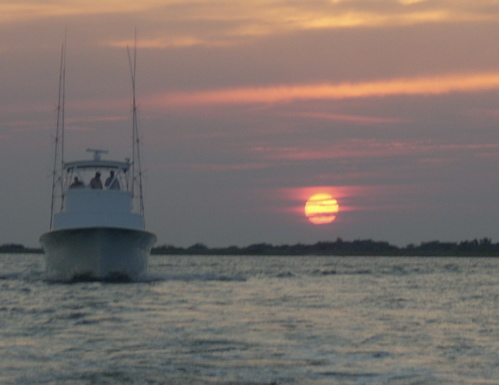 A
charter boat leaves Hatteras Harbor just after sunrise. Running these
boats is a way of life threatened by rising gasoline costs.
A
charter boat leaves Hatteras Harbor just after sunrise. Running these
boats is a way of life threatened by rising gasoline costs.
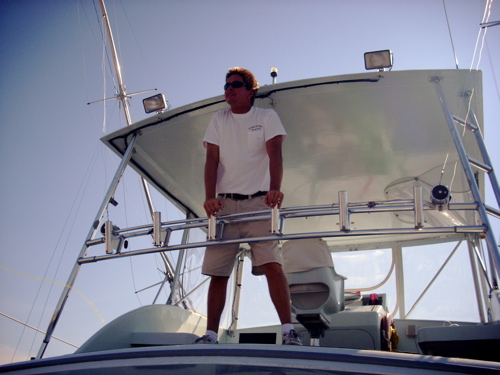 Captain Dan Rooks watches passengers depart his Tuna
Duck after another successful day of fishing.
Captain Dan Rooks watches passengers depart his Tuna
Duck after another successful day of fishing. 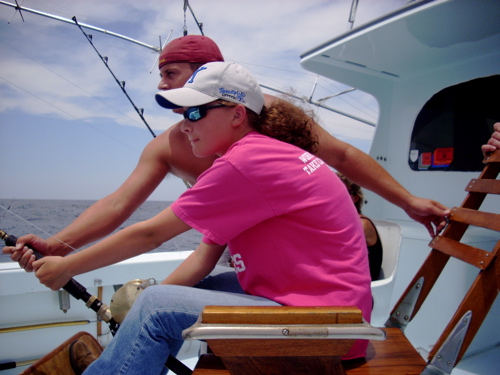
 Tuna
Duck Captain Dan Rooks in white t shirt and First Mate Mike Edwards set
up for a day's fishing.
Tuna
Duck Captain Dan Rooks in white t shirt and First Mate Mike Edwards set
up for a day's fishing. 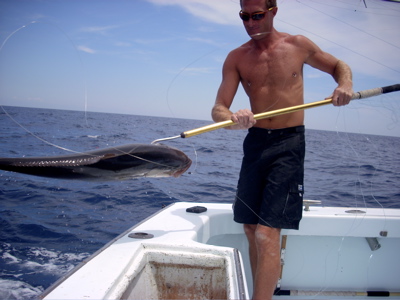 Mike
Edwards lands a Mahi Mahi after Natalie reeled it in. Note the line coiled
around the fish and the "well" it will be placed in and iced
until we get back to shore.
Mike
Edwards lands a Mahi Mahi after Natalie reeled it in. Note the line coiled
around the fish and the "well" it will be placed in and iced
until we get back to shore. 